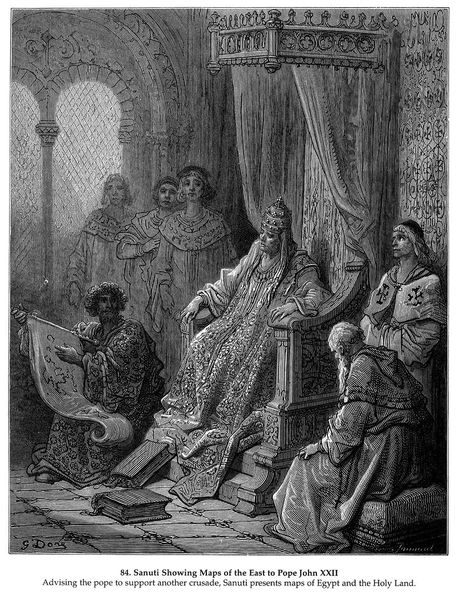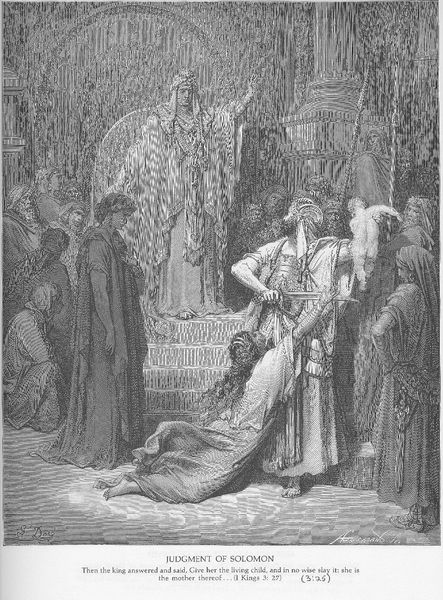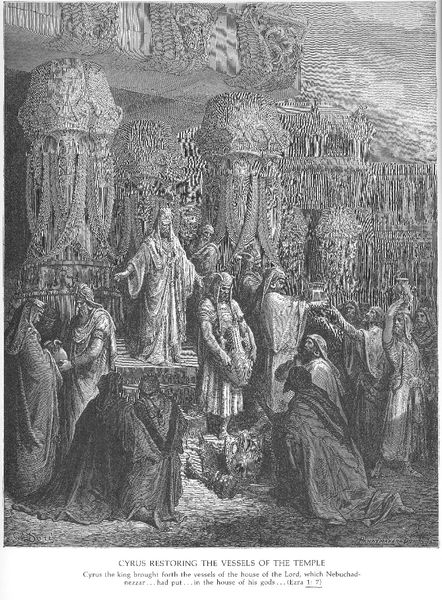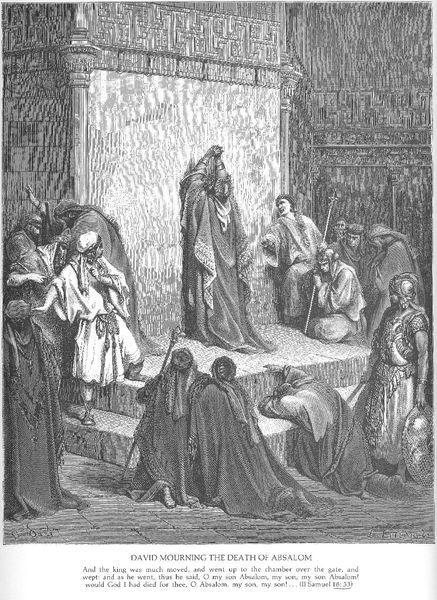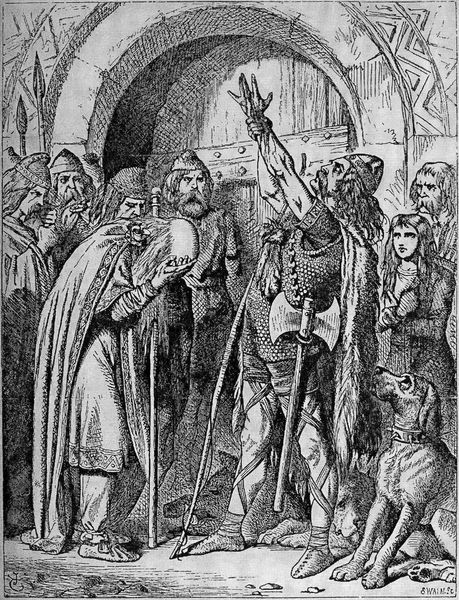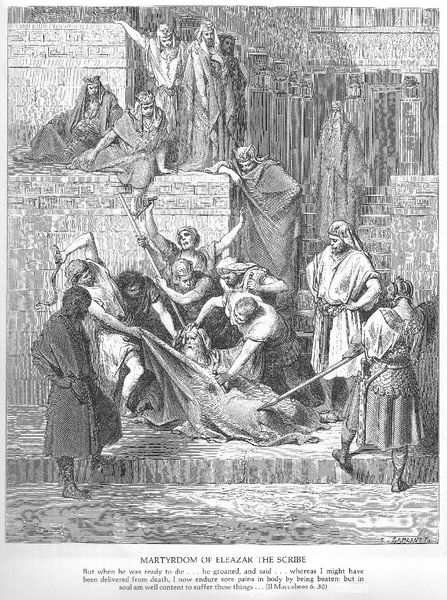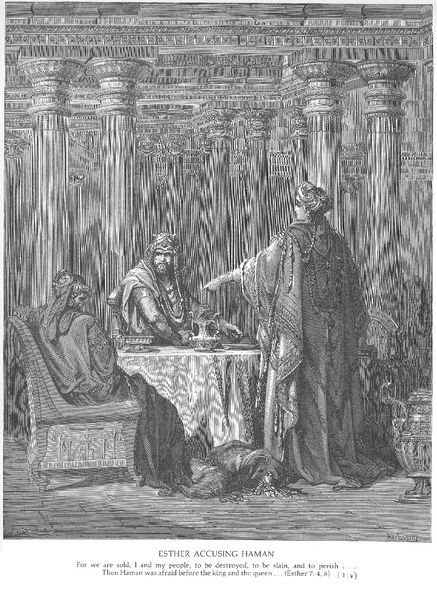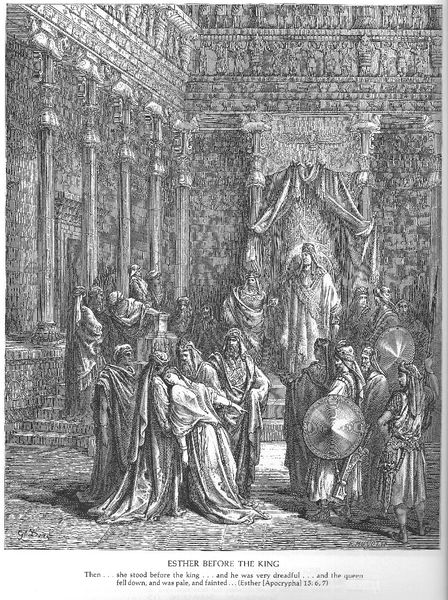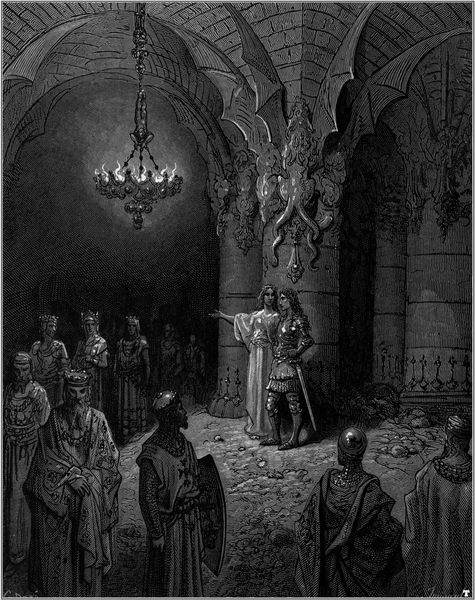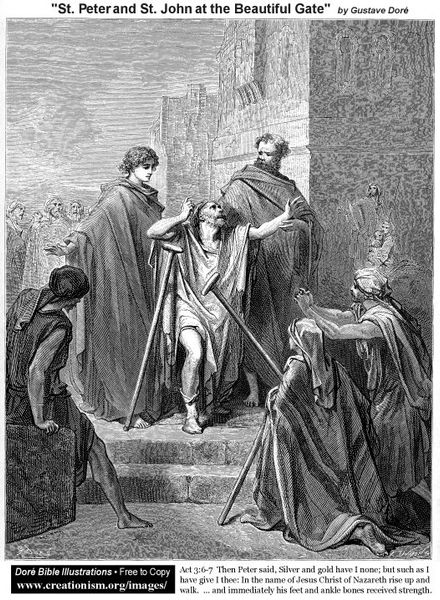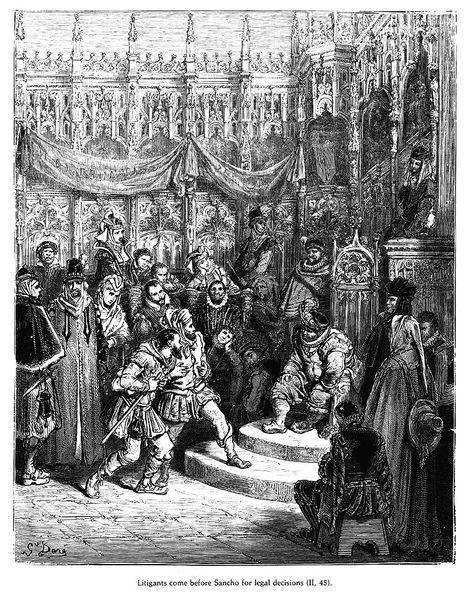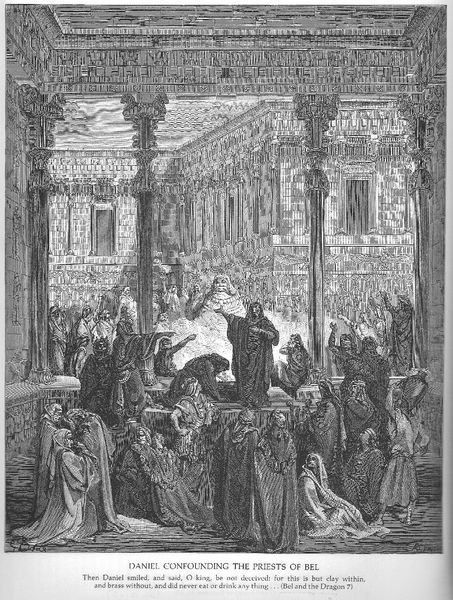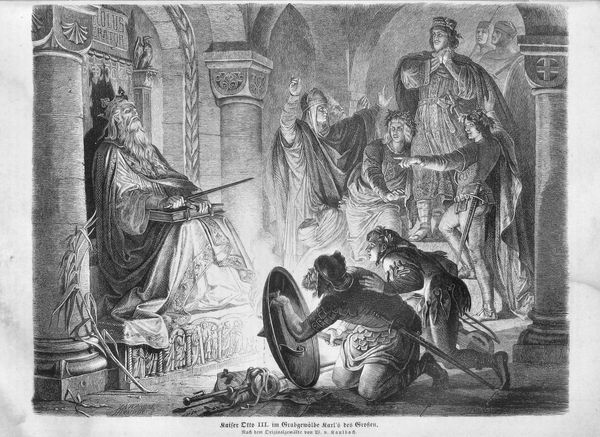
drawing, ink, pen
#
drawing
#
medieval
#
narrative-art
#
pen illustration
#
ink
#
romanticism
#
christianity
#
pen
#
history-painting
Copyright: Public domain
Curator: Gustave Doré’s pen illustration depicts a powerful moment from the Book of Esther, "Queen Vashti Refusing to Obey Ahasuerus' Command." What's your immediate reaction to it? Editor: Stark, visually. The density of the crosshatching creates this really weighty, almost suffocating atmosphere, all this in service of showing a woman’s resistance. It is compelling, how she stands as an immovable, unflinching subject. Curator: Absolutely. Doré masterfully uses ink to amplify the narrative's drama. Consider the symbol of Vashti as the 'good queen,' her refusal is a powerful symbol for resistance to monarchal power, and in its own time, to more recent forms of patriarchal subjugation. Editor: It’s the architecture for me, though. Notice how ornate it is, filled with mythical beasts. The opulence creates a stark contrast with the Queen's very human defiance and her seemingly minimalist garb. Curator: True. The architecture can be interpreted as the establishment itself, rigid, elaborate and domineering, set in contradistinction to Vashti’s quiet but firm assertion. Her actions subvert the expectations placed upon her and create fissures in the patriarchy that the space represents. Editor: Right. I also see a parallel here to later feminist movements challenging power structures and demanding agency. The visual impact underscores Vashti’s pivotal decision, it amplifies her strength in challenging traditional gender roles. Curator: And we can appreciate how Doré uses light and shadow. The chiaroscuro is symbolic; Vashti stands partially illuminated, signifying moral clarity and courage, which brings into relief those men surrounding her shrouded in darkness or obfuscation. Editor: It's like her act becomes a beacon, something radical in her time. A challenge against the absolute authority in her period that can carry through the centuries as other, similar actions come to bear. Curator: The detail is incredibly precise, heightening the intensity. He uses this contrast as a tool. To explore deeper emotional and ideological undertones, to look at personal sovereignty vs entrenched systems of power. Editor: Seeing how Doré represents Vashti’s act of defiance within this high, looming visual density helps to highlight how courage and rebellion resonate in today’s struggles for justice. Curator: I am so fascinated with the weight of symbols and historical dramas—there is power in drawing forth older narratives to meet with ours in contemporary settings, seeing how past is prologue. Editor: For me, this drawing shows the continuous fight for bodily autonomy, and the courage to stand against repressive forces. This visual encapsulation reminds us that revolution, whether quiet or bold, leaves ripples through history.
Comments
No comments
Be the first to comment and join the conversation on the ultimate creative platform.

